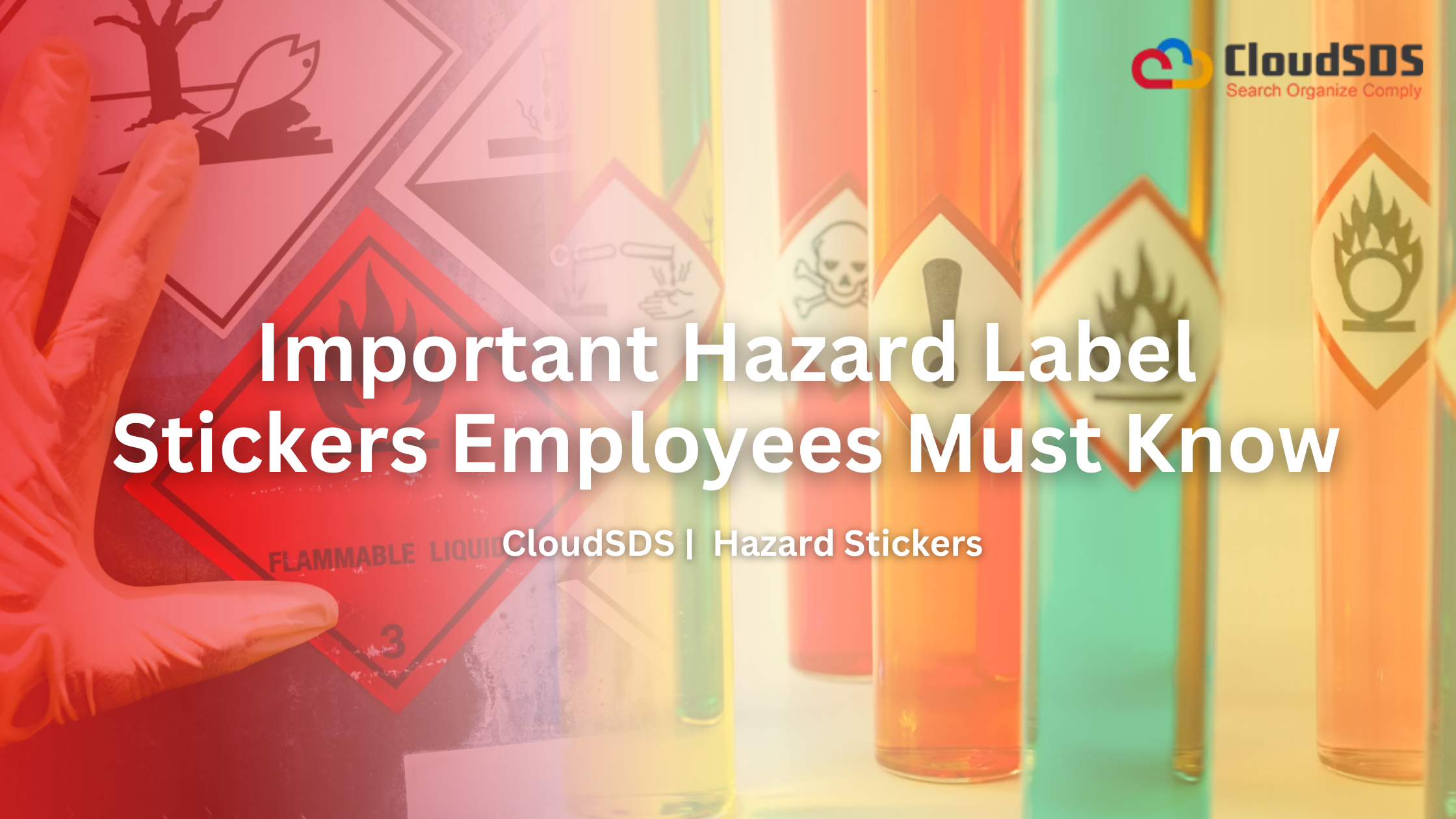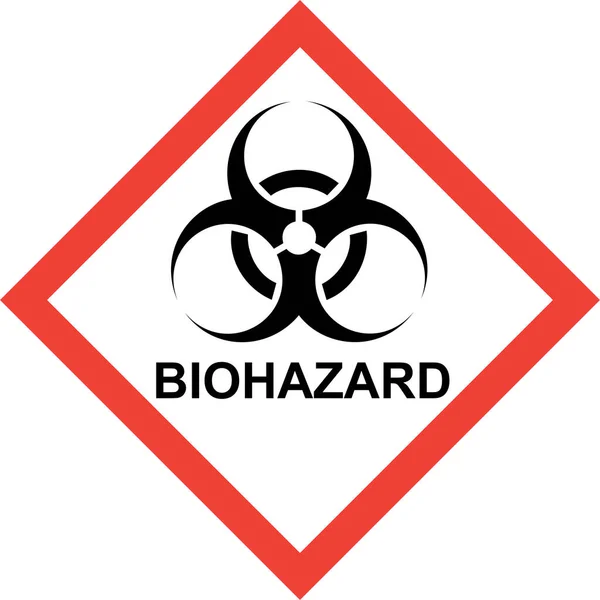Introduction
Hazard label stickers provide quick and clear warnings about the potential risks associated with hazardous materials. These labels give an immediate visual cue which allows individuals to understand the dangers of chemicals even before reviewing the Safety Data Sheets in detail.
Organizations involved in manufacturing, warehousing, chemical handling, or operating animal facilities must prioritize employee safety. One of the most effective methods to uphold safety standards in these environments is through the use of hazard label stickers. These labels play a vital role in communicating potential risks and ensuring that all employees remain aware of possible dangers.
Understanding hazard labels is not just about regulatory compliance; it is a critical aspect of protecting lives. This blog will delve into the key hazard label stickers that every employee should recognize, the reasons for their use, their contribution to workplace safety, and how to maintain compliance with regulations such as OSHA and the Globally Harmonized System (GHS).
Why Are Hazard Label Stickers Important?
Hazard label stickers are visual warnings that inform employees and workers about the presence of dangerous chemicals, the environment, or machinery. These labels are typically color-coded and include symbols, pictograms, and text to convey specific hazards such as toxicity, flammability, or corrosiveness.
They serve several purposes:
- Minimize On-the-Job Hazards and Incidents.
- Maintain Adherence to OSHA Standards and Guidelines.
- Strengthen Emergency Response and Planning.
- Elevate Workforce Safety Knowledge and Skillsets.
Compliance Protocols for Hazard Warning Labels
The two most recognized hazard label standards are:
OSHA mandates that employers must ensure hazardous chemicals in the workplace are properly labeled. This includes clear hazard warnings, pictograms, precautionary statements, and product identifiers.
The GHS gives a universal approach to classifying and labeling chemicals. It standardizes the symbols and phrases used worldwide, making it easier for workers to understand hazards regardless of language or location.
What are the OSHA and GHS Hazard Label Requirements?
Under OSHA (Occupational Safety and Health Administration) and GHS (Globally Harmonized System of Classification and Labeling of Chemicals), hazard labels are required to provide standardized information to ensure the safe handling, use, and storage of hazardous chemicals.
OSHA and GHS Hazard Label Requirements
OSHA’s Hazard Communication Standard (Haz Com), that follows the Globally Harmonized System (GHS), mandates six specific elements to be included on labels.
1. Product Identifier
- The chemical name, code number, or batch number must be mentioned.
- Must match the identifier used on the Safety Data Sheet (SDS).
2. Signal Word
This indicates the relative severity of the hazard:
- “Danger” (more severe)
- “Warning” (less severe)
3. Hazard Statements
- This is a standardized phrase to describe the nature and degree of hazards.
4. Precautionary Statements
These are recommended steps to minimize or prevent effects from exposure:
- Prevention (e.g., “Wear protective gloves, face shields, goggles’’)
- Response (e.g., “If inhaled, remove person to fresh air”)
- Storage and Disposal instructions.
5. Pictograms
There are 8 pictograms:
| ✅Carcinogen, Respiratory sensitizer. |
| ✅Flammable. |
| ✅Irritant, Dermal sensitizer. |
| ✅Gases under pressure. |
| ✅Skin corrosion, Eye damage. |
| ✅Explosives, Self-reactive. |
| ✅Oxidizers. |
| ✅Acute toxicity (fatal or toxic). |
6. Name, Address, and Phone Number
- Manufacturer, importer, or responsible party’s name, address, and phone number is necessary.
Important Hazard Label Stickers Employees Must Know
-
Flammable
- Symbol: Flame
- Color: Red
- Indicates: The substance can ignite easily and burn rapidly.
Flammable hazard stickers are often found on containers of gasoline, alcohol, solvents, and other volatile chemicals. Employees should avoid open flames and heat sources near these materials.
-
Explosive
- Symbol: Exploding bomb
- Color: Orange or red
- Indicates: The material may explode under certain conditions.
These labels are used for fireworks, ammunition, or reactive chemicals; this label warns of the risk of detonation or intense reaction if mishandled.
-
Toxic
- Symbol: Skull and crossbones
- Color: White or black
- Indicates: The substance is poisonous and can cause serious health effects or death if ingested, inhaled, or absorbed.
Toxic labels are critical in labs and chemical plants. Proper PPE and ventilation are essential when dealing with toxic materials.
-
Corrosive
- Symbol: Test tubes pouring on a hand and metal
- Color: Black and white
- Indicates: The substance can cause severe burns and destroy living tissues or metals.
These labels are found on acids and alkalis like hydrochloric acid or sodium hydroxide, employees must wear gloves, goggles, and protective clothing.
-
Environmental Hazard
- Symbol: Dead fish and tree
- Color: Black on white background
- Indicates: The chemical can harm aquatic ecosystems.
Environmental hazard labels are essential for industries that discharge chemicals into waterways. Proper disposal and containment procedures must be followed.
-
Health Hazard
- Symbol: Human silhouette with a starburst in the chest
- Color: Red
- Indicates: The substance may cause chronic health effects, including cancer, respiratory issues, or organ damage.
This label is often associated with carcinogens or respiratory sensitizers. Long-term exposure to these chemicals must be minimized.
-
Gas Under Pressure
- Symbol: Gas cylinder
- Color: Red
- Indicates: The container holds gas under pressure and may explode if heated.
These labels are used on compressed gas cylinders like oxygen or propane. It also emphasizes the need to store and handle gas containers with care.
-
Oxidizer
- Symbol: Flame over circle
- Color: Yellow
- Indicates: The material can intensify fire and cause other materials to combust.
Oxidizers like hydrogen peroxide or potassium nitrate must be stored separately from flammable substances.
-
Irritant
- Symbol: Exclamation mark
- Color: Red
- Indicates: The material may cause skin and eye irritation or allergic reactions.
Often seen on cleaning agents, paints, or adhesives, this label signals a lower level of hazard compared to toxic chemicals but still requires caution.
-
Biohazard
- Symbol: Three interlocking circles
- Color: Orange or red
- Indicates: The material may contain infectious agents.
These types of biohazards are used in hospitals, laboratories, and waste disposal facilities. Biohazard stickers alert workers to the risk of exposure to viruses, bacteria, or other pathogens.
Training Employees on Hazard Labels
Recognizing hazard labels isn’t enough; employees must also understand the implications and precautions associated with each one. A comprehensive training program should include:
- Explanation of each GHS pictogram.
- Real-life examples and case studies.
- Proper PPE for each hazard type.
- Emergency procedures for exposure or accidents.
Organizations should conduct regular training refreshers, and hazard communication updates can drastically reduce workplace incidents.
Regulatory Compliance & Audit Preparedness
To stay compliant, employers must regularly inspect labels and maintain up-to-date Safety Data Sheets (SDS) for every hazardous material. As per OSHA, a few things need to be checked-
- Missing or damaged labels
- Inaccurate hazard communication
- Outdated training records
Failure to comply can result in hefty fines, employee injuries, and reputational damage.
The Role of Digital Labeling Systems
In this digitization age, many organizations tend to use digital hazard labeling systems that integrate with inventory management tools. These systems can:
- Generate real-time labels based on updated safety data.
- Track label usage and placement.
- Automate compliance with OSHA and GHS standards.
This approach minimizes human error and streamlines hazard communication in large-scale operations.
Conclusion
The above- discussion has pointed out that hazard label stickers are more than just compliance tools. Every employee must be familiar with these labels, what they signify, and how to act safely around hazardous materials. By prioritizing proper labeling, providing robust training, and enforcing safety protocols, organizations can give assurance of safety that protects their workforce and boosts operational efficiency.









Leave A Comment